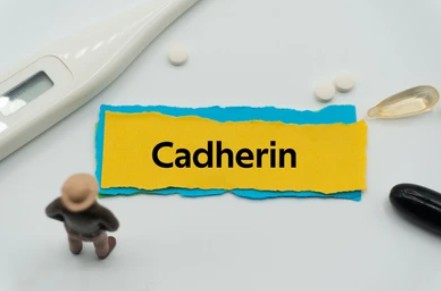T Cell
Creative BioMart T Cell Product List
Immunology Background
Overview of Cadherin Superfamily

The cadherin superfamily is a class of cell adhesion proteins that are widely found in animal cells. This family includes several different subtypes of proteins, such as classical calcium-dependent cell adhesion molecules (classical cadherins), as well as other types of cadherin proteins, such as non-classical cadherins, cadherins in prokaryotes, and several molecules that regulate cell adhesion. They play important roles in processes such as embryonic development, tissue formation, cell architecture maintenance, and signal transduction. Researchers have found that cadherin superfamily proteins participate in cell adhesion and selective adhesion between cells through the calcium ion-dependent adhesive force of their extracellular domains and binding to intracellular linker proteins and the cell cytoskeleton. Increasing evidence suggests that the cadherin superfamily plays crucial roles in the occurrence and progression of cancer, and its abnormal functioning may lead to invasion and metastasis of cancer cells, providing new insights into cancer prevention and treatment. Researchers employ various techniques such as cell culture, protein interaction studies, biochemical methods, immunohistochemistry, and gene knockout to investigate the function and regulatory mechanisms of the cadherin superfamily, enabling us to gain a deeper understanding of its role in cell adhesion and related diseases. In summary, the cadherin superfamily plays an important role in cell adhesion and tissue development and is closely associated with the occurrence and progression of diseases. With further research and technological advancements, we will be able to better understand the function and mechanisms of this family, providing new strategies for the treatment and prevention of related diseases.
Research Areas of Cadherin Superfamily
- Embryonic development and tissue formation
The cadherin superfamily plays a key role in embryonic development and tissue formation. Researchers explore the mechanisms of cadherin proteins in embryonic growth, morphogenesis, cell differentiation, and tissue establishment, and study the expression patterns and functions of cadherin proteins in the development of different tissues (e.g., nervous system, heart, lungs, and kidneys).
- Cancer and metastasis
Researchers have found that aberrant expression or dysfunction of cadherin in many cancer types is associated with tumor cell invasion and metastasis. By studying the mechanism of cadherin's action in tumor cells, scientists hope to find new treatments and drugs for cancer.
- Neurological development and synaptic plasticity
The cadherin superfamily plays a major role in nervous system development and synaptic plasticity. Researchers study the function of cadherin proteins in processes such as neuronal migration, axon guidance, synapse formation, and synaptic transmission, and explore their association with neurological disorders such as Alzheimer's disease and autism.
- Autoimmune diseases
Some autoimmune diseases are associated with the cadherin superfamily. For example, some autoimmune disease patients have autoantibodies to specific cadherin proteins that lead to immune attacks on their tissues. Researchers are working to understand the specific roles and potential mechanisms of cadherin proteins in autoimmune diseases.
- Cell signaling and disease mechanisms
In addition to their cell adhesion functions, cadherin superfamily proteins are involved in the regulation of intracellular signaling pathways. Researchers are committed to unraveling the interactions of cadherin proteins with other signaling pathways and investigating their roles in disease onset and progression, such as heart disease, tumors, and neurodegenerative diseases.
In summary, the research areas of the cadherin superfamily cover a wide range of cell adhesion and tissue development, cancer and metastasis, nervous system development and synaptic plasticity, autoimmune diseases, and cell signaling. These studies are of great significance to our understanding of cell biology, developmental biology, disease mechanisms, and the search for new therapeutic approaches.

